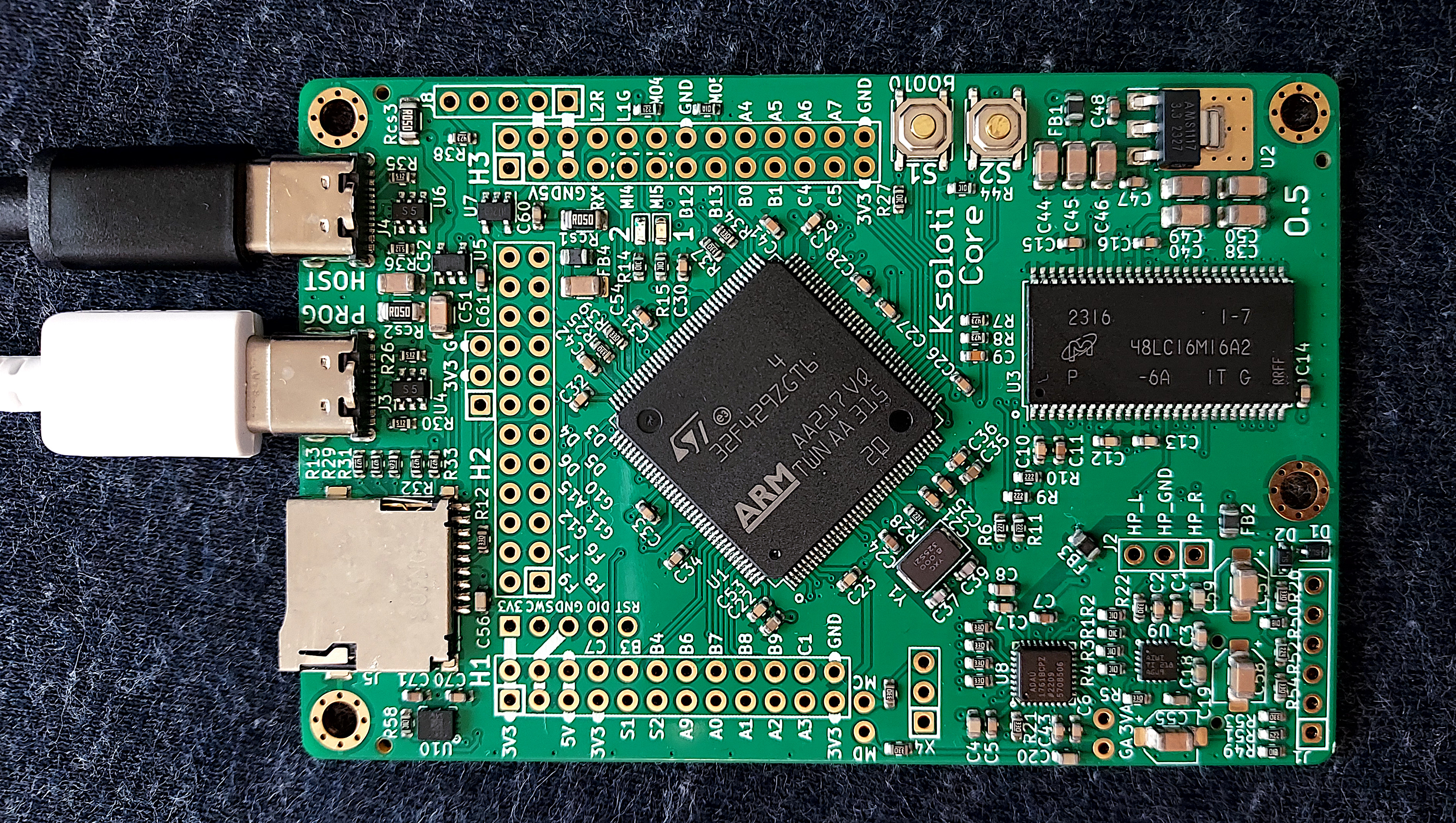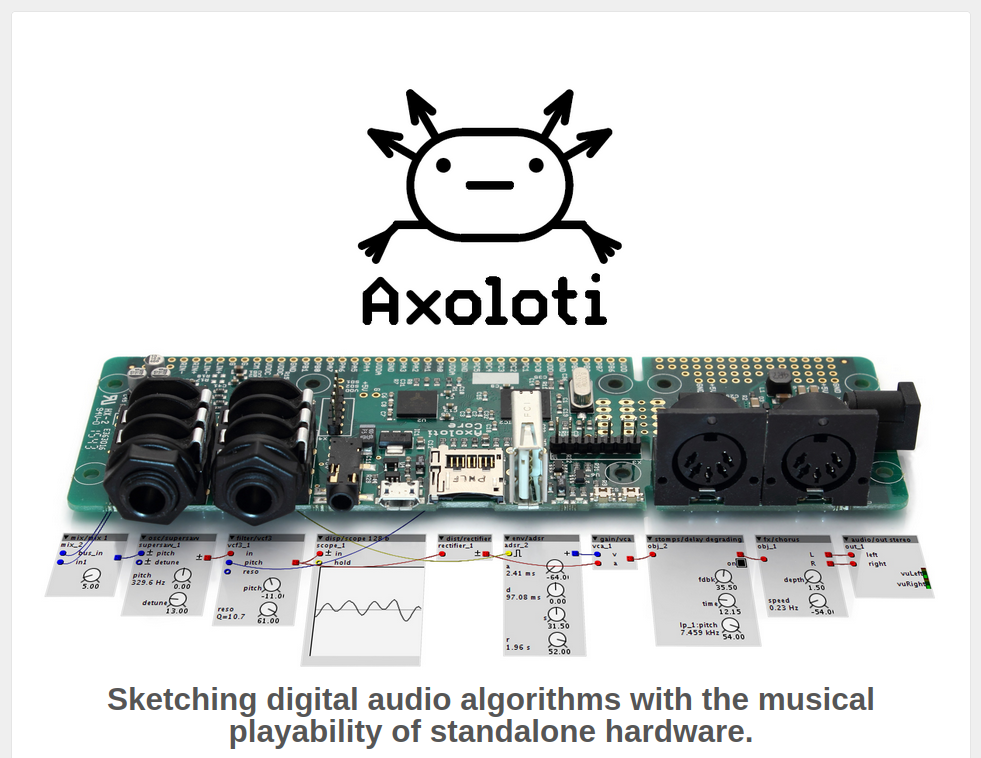Axoloti is a DIY-friendly digital audio environment for “Sketching digital audio algorithms with the musical playability of standalone hardware.” It is open source and was created by the brilliant Johannes Taelman.
The Axoloti environment essentially consists of two parts:
1. The software part, called the Patcher, “offers an […] environment similar to Max/MSP, Pure Data or Reaktor” on your Windows, MacOS, or Linux computer. Some it may also remind of the Nord Modular. In the Patcher you have a canvas where you place objects and interconnect them to create or modify sound, just like on a virtual modular synthesizer. See the screenshot below:

A simple patch in the Axoloti Patcher. Sending a Braids oscillator through a lowpass filter straight to the audio outputs.
The Patcher and object libraries are fully open source. Hacking existing objects is comparably easy and encouraged! You can quickly embed most stock objects and, with basic understanding of C/C++, mess with the code to change it to your needs. With some experience, you can also create your own collection of objects from scratch.
2. The hardware part is the board you see in the first image (Axoloti) or below (Ksoloti). The patches you create or edit in the Patcher “run on a standalone powerful microcontroller board : Axoloti Core.” (or Ksoloti Core, respectively) You can preview and play your patch using the “Live” button.
When your patch is ready for stanadalone use, you can flash it to the Axoloti Core/Ksoloti Core so you don't need your computer to play it. With a bit more effort you can upload a collection of patches to SD card and set up a controller patch on the Core, allowing you to toggle through your patches at runtime (also without a connection to your computer, of course).
The Axoloti Core hardware board became unavailable at some point, but because Johannes graciously open-sourced the schematic (and since the global part shortage somewhat improved) it was possible to recreate a board nearly fully compatible to the original: the Ksoloti Core.
In short, the Ksoloti Core aims for maximum compatibility with the original Axoloti Core with some layout changes and added features.

Ksoloti Core v0.5. Size: 59 mm * 90 mm including protruding USB jacks and SD slot.
But wait, where are all the jacks? Good thinking! The Ksoloti Core was first designed to be a daughterboard for a Eurorack module. It has been designed to be very thin (overall thickness under 5mm, pin headers aside. The tallest components are the USB Type-C jacks), and to fit parallel behind a 12hp Eurorack panel.
However it became clear early on that it is just as fun to run the Ksoloti Core standalone or “headless”. There are several options on how to connect your Core to the outside world, from minimal to full-featured. More on that later!

Axoloti Core, Akso, early Ksoloti Core prototype.
Board dimensions and layout aside, the two main hardware differences to the original Axoloti Core are:
- Ksoloti Core does not have any audio and MIDI jacks on-board. (since Core v0.7, MIDI in and out circuitry is on board, so you only need to solder MIDI jacks if you want to use DIN or TRS MIDI.)
- Ksoloti Core has more pins and functions broken out to headers.
For more technical details check out the documents on the Resources page.
 Image source:
Image source: